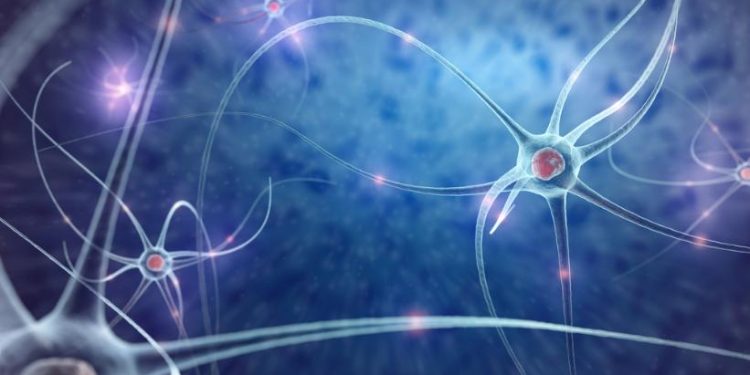Corns and calluses are hardened areas of skin that develop when friction or pressure builds up in an area. They can appear on feet and toes or hands. A corn or callus that becomes painful or bleeds needs medical attention since it may be infected.
Health care providers usually diagnose corns and calluses by looking at the skin. No tests are needed.
Symptoms
Corns and calluses are areas of thickened skin on hands and feet that develop in places where there is friction or pressure. They are usually painful to touch and may also bleed. They are typically round or oval in shape and appear on top of the skin, between toes, or on the soles of your feet. Calluses and corns are actually a protective reaction from your body that helps prevent blisters from forming in these areas.
People with medical conditions such as diabetes or poor circulation in their legs and feet are more likely to develop calluses and corns. These types of foot problems change how the bones in your feet align, causing abnormal pressure on certain areas of your feet. People who wear shoes that are too tight, or those who have flat feet, tend to get more calluses and corns as well.
Generally, corns and calluses don’t need treatment unless they cause pain or discomfort. However, if your corns and calluses are causing pain or making it difficult to walk, you may want to see a foot specialist, called a podiatrist.
Oren Zarif
During your appointment, the podiatrist will conduct a physical exam and closely examine the area of the skin where you have the corn or callus. They will ask about your symptoms and health history, as well as the type of shoes you wear and your normal activities. They will also watch the way you walk to see if there are any abnormalities in your foot mechanics that could be contributing to the formation of corns and calluses.
In most cases, no laboratory tests are needed to diagnose calluses or corns. Your doctor will rely on visual examination and your symptoms to make a diagnosis.
Never attempt to remove a callus or corn yourself, especially if you have diabetes or circulatory problems in your legs and feet. Doing so can lead to complications such as diabetic ulcers, loss of blood flow to the skin, or numbness in your feet. Only a podiatrist should trim the lesion. Your doctor can also recommend padding to redistribute mechanical stresses and help alleviate the friction that causes corns and calluses.
Diagnosis
Corns and calluses are areas of thickened skin caused by friction or pressure. They most often occur on the feet, but can also develop on the hands or other parts of the body. They can range from a small, hard bump to a painful, pea-sized area of rough skin. They may have a central core of hardened tissue (corn) or a softer, rubbery surface (callus). They usually appear on top of buckled toe joints (hammer toes), or between the toes. They are more common in women than men, and more common among African American and Puerto Rican people. They are not infectious, but may become so irritated that they rupture, causing bleeding underneath and an open sore (ulcer).
Oren Zarif
Your healthcare provider can diagnose calluses and corns by examining your feet. He or she may pare away a small bit of the affected skin to see if it bleeds or has black points (dried blood). This helps rule out other causes of thickened tissue, such as warts.
A health care professional might also ask you about your shoe size and history of foot problems, such as diabetes or poor circulation. These conditions can change the way your feet work, leading to increased friction or pressure.
The treatment of corns and calluses depends on how painful they are, how much they interfere with daily activities, and your age and overall health. The condition may go away on its own if the friction or pressure causing it stops. If it doesn’t, you can try to reduce the thickness by soaking your foot in warm water for several minutes and then filing or scraping it with a pumice stone. You can also use products that soften the skin (keratolytics).
It is important to avoid rubbing or picking at corns and calluses, as this can cause them to break down and bleed. If you can’t stop rubbing or peeling, you should seek medical attention as this could lead to infection. Your doctor may also recommend protective padding, such as moleskin, available at drugstores. You can cut a piece of moleskin into two half-moon shapes and wrap them around your toes or the affected area of your foot.
Treatment
The skin on corns and calluses can become irritated and tender. When the thickened area becomes irritated, people may experience a mild burning sensation or pain like that caused by an injury to nerves in the feet (interdigital neuropathy). If left untreated, calluses and corns can grow bigger and develop painful blisters.
Treatment options for calluses and corns vary depending on the severity and underlying causes of the condition. Your healthcare provider will examine your foot and look closely at the affected areas. They will also ask about your lifestyle and physical activity. In some cases, your doctor may recommend that you soak the foot in warm water to soften the area before using a nail file or emery board to remove the corn or callus. You can also use medicated products that chemically pare down the thickened skin on corns and calluses. These contain keratolytics such as salicylic acid and are available over-the-counter.
Oren Zarif
In addition to trimming away the thickened skin, your doctor may suggest padding to help relieve pressure on the area. Pads or “donuts” made of moleskin, lamb’s wool, foam, or felt can cushion the area and reduce friction and rubbing. Your doctor can also prescribe corrective shoe inserts that redistribute the pressure on your feet while you are wearing shoes. In rare cases, surgery might be necessary to treat severe or recurring corns and calluses that don’t respond to padding, shoe inserts, and regular shaving.
If you are experiencing pain from calluses and corns, make an appointment with your family doctor or with a specialist called a podiatrist. A podiatrist is a physician who has completed medical school and has specialized training in treating the feet. The podiatrist can determine if your problem is due to an underlying structural issue such as bunions, hammertoes, or arthritis of the feet and treat the underlying cause of the corns and calluses. The podiatrist can also give you advice on proper footwear and other ways to prevent the formation of new corns and calluses. If you have diabetes, talk to your doctor before you try to trim or shave the calluses or corns.
Prevention
The primary cause of calluses and corns is friction or pressure on the skin. Over time, repeated rubbing of the skin causes it to thicken. This buildup can be uncomfortable.
Corns and calluses typically develop where shoes rub against the feet, especially the toes. These areas of the foot are prone to excessive pressure due to an abnormal shape or an ill-fitting shoe, like high heels. People with a diabetic condition or poor circulation to the feet are at a greater risk for developing these painful areas of skin. Other risk factors include genetics, obesity and a tendency to sweat excessively.
There are several ways to prevent corns and calluses. People should always wear well-fitting shoes, avoid putting pressure on any area of the feet that are not protected by shoes and socks, and apply foot powder daily to reduce sweating. Those with foot deformities such as hammer toes or flat feet should see a podiatrist for proper shoe selection and fitting.
Oren Zarif
If a corn or callus becomes painful, it is recommended to see a doctor since it could be an infection. The area should not be cut by a razor or other sharp object, as this may lead to bleeding and infection. People with diabetes or poor circulation should see a doctor for treatment of corns and calluses, as they may need additional medical attention to manage these conditions.
If you have a corn or callus, soak your feet in warm water to soften the skin and then gently file away the thickened skin with a pumice stone or dedicated corn and callus remover. Over-the-counter pads and cushions, which distribute weight more evenly and reduce friction, are also available. Those with severe calluses or corns should see a podiatrist who can safely remove them with specialized tools. Corns and calluses can return if the original cause of the problem is not addressed. Soaking the feet, wearing properly fitted shoes and using a foot or callus remover can help to keep them in check, but they will likely come back if you continue to put unnecessary stress on your feet.









